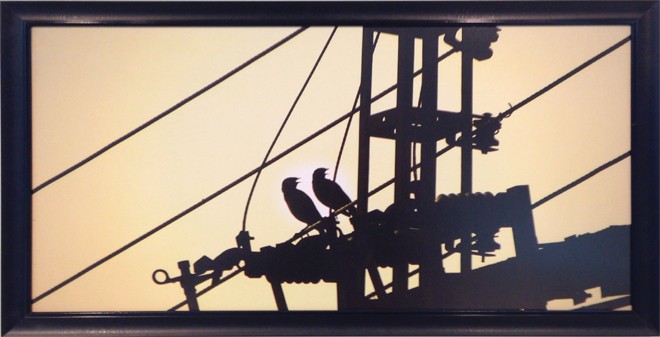

We live in a beautiful world, one that changes in an infinite number of ways every second. That which was a minute ago is never really there the next moment. This is particularly true of the little details that together form the spectrum of our daily lives. Photography is one such medium that uses a camera instead of a brush to capture the essence of a moment.
The unprecedented rise in the sale of digital cameras during the past decade has brought photography within the reach of the masses. Moments of sentimental value are no longer lost due to time constraints as with the practice of the more traditional modes of art. Digital photography is today a very convenient and inexpensive method of artistic expression.
An exhibition of artistic expression through the medium of photography was recently hosted by the Alhamra Arts Council of Lahore. Titled Wonderful World, it was Noorie Zaman Khan’s first solo photography exhibition. Noorie Z Khan is a graduate of the Fine Arts department of the University of Punjab. It was while as a student of photography that Khan became drawn towards the medium.
Inaugurated by Maliha Azami Aga, Principal of Punjab University’s college of Art and Design, the presentation consisted of 30 photographs culled from Khan’s photographic endeavours over the past few years. The exhibition’s title was a very appropriate one, considering that the photographer’s focus was on nature and the beauty inherent in commonplace vistas. Photographs capturing the effects of light and shade on window surfaces and natural vistas formed the bulk of the exhibition.
Photographs of Swiss mountains shrouded in fog and trees laden with snow were hung next to two-toned pictures of crows outlined against the afternoon sky. Bicycles parked on roadside curbs shared space with a photograph of light filtering in through a glass window. These were images that represented the connection between the image and sentimentality that Roland Barthes talks about in Camera Lucida.
The photographer’s personal favourite was the image of a swan frozen in the act of picking up a crumb of bread from the pavement. Titled Bread, Khan explained that the photograph represented the practical reality of our life. According to her, the bent neck of the swan intent on eating a piece of bread symbolises the humility that is as necessary as hard work to succeed in this struggle called life. It was interesting to observe the sharp contrast between the pristine beauty of the swan’s white feathers and her webbed black feet.
While it was obvious that each image had a special value for the artist herself, there was nothing within those photographs to hold the interest of a detached viewer. The problem lay with what Ms. Aga called ‘presentation’. Her opinion that the photographs would have arrested more attention had they been outlined and mounted in a larger format was spot on. On their own, the images did not contain much uniqueness. But the viewers might have been able to better appreciate the artist’s perspective had there been captions underneath each photograph.